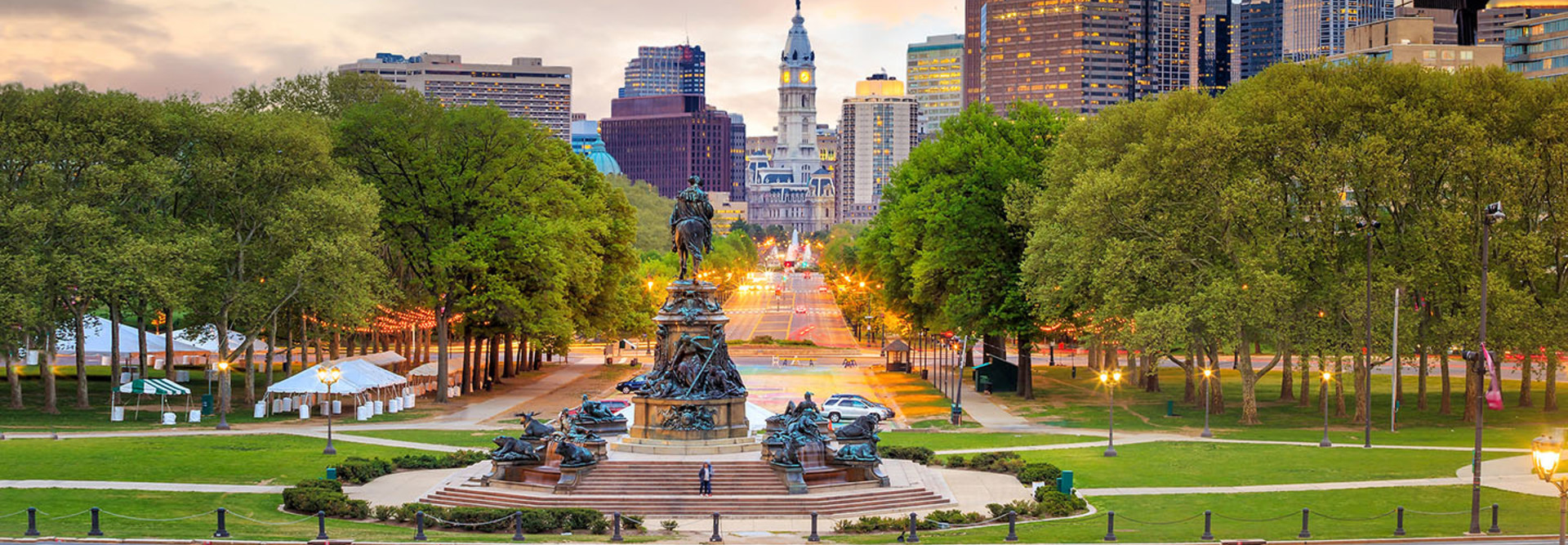Philadelphia Kick-Starts Smart City Efforts
When Philadelphia Mayor Jim Kenney lit the city’s Christmas tree this year, he flipped the switch on a 52-foot tree powered by 100 percent clean energy.
The LED lights on the Canaan fir also can be controlled remotely for the first time in a test of “smart city technology,” says Charles Brennan, chief information officer of the city’s Office of Innovation and Technology.
Philadelphia’s interest in connected technology extends beyond the holiday season. In February, Philadelphia was one of five U.S. cities awarded a Smart Cities Council Readiness Challenge Grant, alongside Austin, Texas; Indianapolis, Ind.; and two cities in Florida: Orlando and Miami.
Each grant recipient receives a year of free mentoring, an on-site Readiness Workshop, membership in the Smart Cities Leadership Circle, products and services from leading technology companies, such as CompTIA, and publicity that can help to boost efforts.
Jesse Berst, chairman of the Smart Cities Council, says the organization received dozens of applications, but Philadelphia was awarded the grant because of its focus on serving all residents, including the disabled and those in lower-income neighborhoods, among other reasons.
“Of course, we all love the high-income millennial, but we don’t want cities that are designed exclusively for them,” Berst says.
SIGN UP: Get more news from the StateTech newsletter in your inbox every two weeks
Philly Revamps Failed Tech Initiatives with a New Focus
This renewed interest in connected technology comes after some initial missteps in introducing a citywide Wi-Fi network, called Wireless Philadelphia, in the mid-2000s that never got off the ground.
“It’s a failed initiative by any standard, but some things came out of it that are pretty interesting,” Andrew Buss, the deputy CIO for innovation management within Philadelphia’s Office of Innovation and Technology, said at an event earlier this year. “Because everyone was so in to Wireless Philadelphia for that period of time, what ends up happening is we created all these really active communities around the topic of broadband — very committed people, community organizations, individuals, people who are excited about the issue.”
Now, the city is building off of that initial human and technological infrastructure to further new initiatives. Officials say they are focused on introducing technology tailored to neighborhood needs — an approach they say is a departure from the way many major cities have approached smart technology.
Officials have thought of new ways to expand Wi-Fi access. The plan, modeled after a similar approach taken by New York City, calls for kiosks that would deliver Wi-Fi within a space of about 300 feet.
About 80 percent of the kiosks are planned for high-tourist areas and University City, where three of the city’s universities are located. The remainder would be situated in neighborhoods, says Ellen Hwang, program manager for innovation management in the city’s Office of Innovation and Technology.
The city’s previous attempt to expand Wi-Fi access also taught city leaders some valuable lessons for new initiatives, including that the city government should not to try to compete with private business, Brennan says.
Instead, he says, the focus will be on developing public-private partnerships to bolster and sustain smart city initiatives.
Open Data, Smart Meters Lead Smart City Efforts
As officials pursue these projects, Brennan says they will think carefully about what each section of the city needs most.
“Each project would not necessarily cover the whole city,” Brennan says. “Every problem does not exist citywide.”
For example, in one of the city’s business hubs, parking is a priority, while in high-crime neighborhoods there is more need for video surveillance.
As officials work to define a plan that will support the city comprehensively in the long-term, Brennan says there already are some smart city projects in the works. That includes a smart water meter reading system.
“You can monitor water usage in real time and remotely,” Hwang says.
That will allow for better detection of water leaks and needed maintenance, she says.
The city has about 560,000 properties that would need to be retrofitted with the technology — a process that would take a number of years — Brennan says, adding that the Philadelphia City Council is still working out the details of the program.
Moreover, the city’s Office of Open Data and Digital Transformation is pursuing an open data initiative that aims to demonstrate how the city and citizens alike are “using open data in their day-to-day lives to make Philadelphia shine,” according to a post announcing the project.
Brennan says the leading reason people visit the city’s website is for property data, so the city has set its sights on making that data more accessible.
In November, the city launched Atlas — a database accessible from the city’s website that offers a one-stop shop for property data. The open data initiative includes basic property data as well as information such as the number of 911 calls to the neighborhood.
As the city moves forward in its efforts to implement its smart city plan, officials say one key is to get all of the city’s 25,000 government employees on the same page.
“That, in itself, is a monumental accomplishment,” Brennan says. “I think that’s why we’ll eventually succeed here in what we do.”








